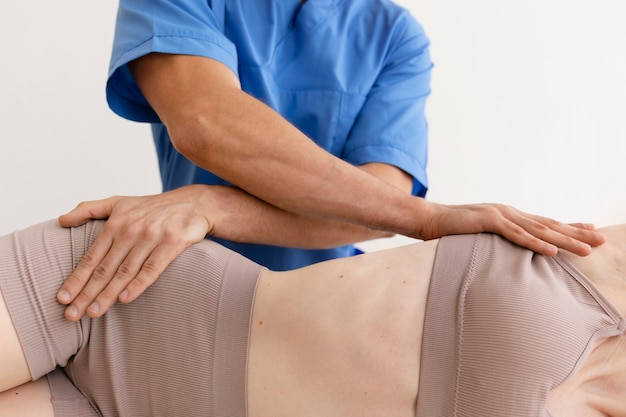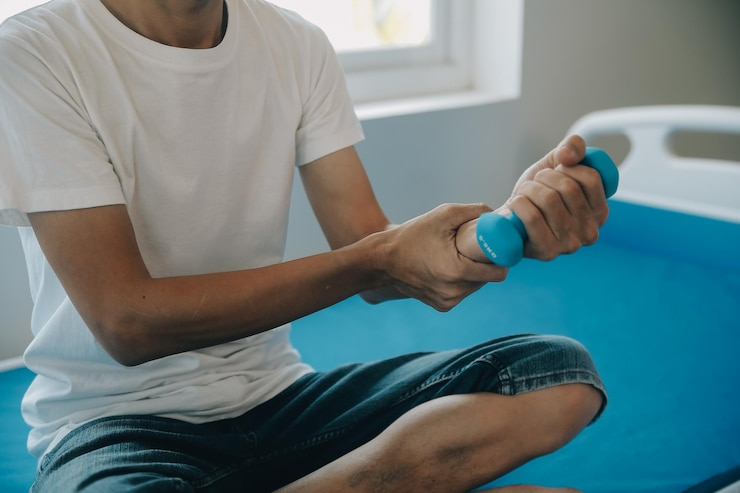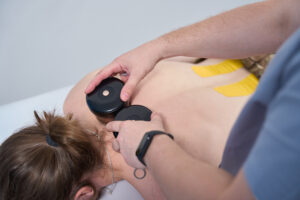Pain relief and physical therapy are two key aspects of modern healthcare that often go hand in hand. Whether you’re dealing with chronic pain, recovering from an injury, or seeking to improve your quality of life, understanding how physical therapy can contribute to pain management is essential.
In this article, we will explore the relationship between pain relief and physical therapy, how physical therapy works to alleviate pain, the different techniques used, and how these therapies can improve your overall well-being. From improving movement to strengthening muscles, physical therapy is one of the most effective tools for managing pain.
What is Physical Therapy?

Physical therapy (PT) is a branch of healthcare that focuses on treating physical impairments or disabilities. It involves using exercises, manual therapy, and other modalities to restore movement, reduce pain, and prevent further injury. Physical therapists (PTs) are highly trained professionals who assess, diagnose, and design customized treatment plans for individuals experiencing pain or limited mobility.
The goal of PT is not only to reduce pain but also to improve function and prevent future issues. For many individuals, it offers a non-invasive and drug-free alternative to manage pain, especially for musculoskeletal conditions.
How Physical Therapy Helps with Pain Relief
Physical therapy aids pain relief in multiple ways, including:
- Targeted Exercises: Specific movements can strengthen muscles and improve flexibility, reducing pressure on joints and relieving pain.
- Manual Therapy: Techniques like joint mobilization and soft tissue massage can reduce muscle tightness and improve range of motion.
- Posture Correction: Poor posture can lead to chronic pain, especially in the back and neck. Physical therapy helps correct these issues, providing long-term relief.
- Modalities: Techniques such as heat, cold, ultrasound, and electrical stimulation are commonly used in physical therapy to reduce pain and inflammation.
Types of Pain that Physical Therapy Can Treat
Musculoskeletal Pain
Musculoskeletal pain is among the most common types of pain treated with physical therapy. This category includes conditions such as:
- Back Pain: Whether caused by poor posture, a herniated disc, or muscle strain, PT is extremely effective for relieving back pain.
- Neck Pain: Issues like cervical spondylosis or whiplash can be managed with physical therapy techniques.
- Joint Pain: Pain in knees, shoulders, hips, or wrists can be addressed with specific exercises and treatments to improve joint function and reduce discomfort.
Chronic Pain and Neuropathic Pain
Conditions like fibromyalgia, sciatica, and chronic arthritis often result in persistent pain. Physical therapy can be used to manage these conditions by improving muscle function and reducing inflammation.
Post-Surgical Pain
Recovering from surgery can lead to stiffness and discomfort. PT plays a vital role in post-surgical rehabilitation, helping patients regain strength, mobility, and function while reducing pain and preventing complications like adhesions.
Key Techniques Used in Physical Therapy for Pain Relief
Therapeutic Exercises

Therapeutic exercises are an individual’s specific condition and are the foundation of physical therapy. These exercises can focus on:
- Strengthening Muscles: Targeting weak muscles that contribute to pain and instability.
- Stretching: Increasing flexibility and reducing tightness in muscles and joints.
- Balance and Coordination Training: These exercises are essential for preventing falls, especially in older adults or those recovering from surgery.
Manual Therapy
Manual therapy involves hands-on techniques to manipulate muscles and joints. Common manual therapies include:

- Joint Mobilization: Passive movement of a joint to improve its mobility.
- Soft Tissue Massage: To release muscle tension, increase circulation, and promote healing.
- Myofascial Release: A technique targeting tight connective tissues that cause pain and restriction.
Modalities for Pain Management
- Heat Therapy: Helps relax muscles, improve blood circulation, and reduce pain.
- Cold Therapy (Cryotherapy): Reduces inflammation and numbs the affected area to decrease pain.
- Ultrasound Therapy: Uses sound waves to promote healing by increasing circulation and reducing swelling.
- Electrical Stimulation: Uses electrical currents to stimulate nerves and muscles to alleviate pain and promote healing.
Benefits of Combining Pain Relief with Physical Therapy
A Non-Invasive Alternative to Surgery
One of the biggest advantages of physical therapy is its ability to reduce pain and restore function without the need for invasive surgeries. For many, physical therapy can be a first-line treatment before resorting to procedures or medications. It helps individuals recover naturally by focusing on strengthening and healing the body.
Reduces the Need for Medications
For those with chronic pain, long-term use of medications (especially opioids) can lead to dependency and side effects. Physical therapy offers a drug-free solution to manage pain, reducing the need for painkillers and other medications.
Enhances Long-Term Mobility
Physical therapy is not just about alleviating pain in the short term. It also promotes long-term mobility, flexibility, and strength. By strengthening muscles and improving joint health, PT helps reduce the likelihood of future injuries and pain flare-ups.
When to Seek Physical Therapy for Pain Relief?
Early Intervention vs. Delaying Treatment:
Seeking physical therapy early on can help prevent the progression of pain and disability. Whether you’re dealing with a recent injury, recovering from surgery, or managing a chronic condition, the sooner you start treatment, the better the outcome.
Delaying physical therapy may result in muscle atrophy, worsening pain, or permanent damage that could have been avoided with earlier intervention.
Signs That Physical Therapy Is Right for You
Consider seeking physical therapy if:
- You experience pain that lasts more than a few days.
- You find it difficult to move a joint or perform daily activities.
- Your pain is affecting your sleep, work, or social life.
- You are recovering from surgery or injury and need assistance regaining strength and mobility.
FAQs
How long does it take for physical therapy to relieve pain?
The time required for pain relief through physical therapy depends on the severity of the condition, the individual’s overall health, and how consistently the treatment plan is followed. In general, patients can begin to experience relief within a few sessions, though a full recovery may take weeks or months.
Is physical therapy painful?
While physical therapy might involve some discomfort—particularly in cases of muscle stiffness or injury—it should not cause significant pain. Therapists adjust treatments to the patient’s comfort level, and the goal is to reduce pain over time.
Can physical therapy be done at home?
In some cases, physical therapists may provide home exercises as part of a treatment plan. However, the guidance of a trained professional is often needed for proper technique and to ensure the treatment is effective.
Can physical therapy prevent future pain?
Yes! Physical therapy strengthens muscles, improves flexibility, and promotes healthy movement patterns, all of which reduce the risk of future pain and injury. For many individuals, ongoing physical therapy can help maintain long-term well-being and mobility.
Conclusion:
Incorporating physical therapy into your treatment plan offers a powerful, non-invasive approach to managing pain, restoring mobility, and improving overall health. Whether you’re recovering from an injury or surgery, or living with chronic pain, physical therapy can help you find relief and return to normal activities faster. Addressing the root causes of pain and focusing on strengthening and healing, not only provides immediate relief but also sets the stage for long-term pain management.
If you or someone you know is struggling with pain, don’t hesitate to explore physical therapy as an effective treatment option. Start your journey to pain relief today and embrace the healing power of physical therapy!





